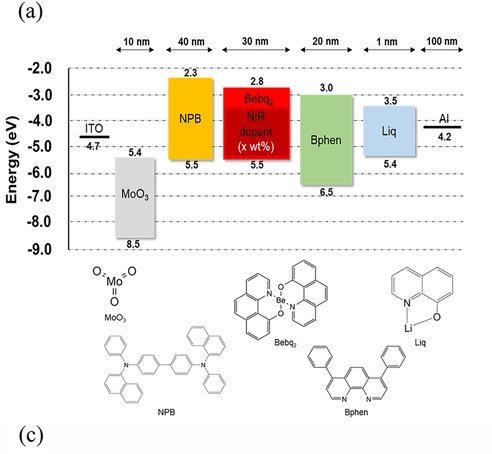Heteroleptic Ir(III)‑based near‑infrared organic light‑emitting diodes with high radiance capacity
Park, Y., Lee, G.S., Lee, W. et al.
Sci Rep 13, 1369 (2023).
https://doi.org/10.1038/s41598-023-27487-6
Researchers have designed Ir(III)-based heteroleptic NIR materials for near-infrared organic light-emitting diodes (NIR OLEDs) with a focus on radiance capacity (RC) rather than just radiance. The emitters exhibit a highly oriented horizontal dipole ratio, short radiative lifetime, and extremely low turn-on voltage.
The device demonstrates a high RC of 720 mW/sr/m2/V, making it a standout performer among Ir(III)-based NIR OLEDs with similar emission peaks, and has potential applications in healthcare, authentication, and night vision displays.
Measurement of the angle dependent p‑polarized photoluminescent spectrum (ADPL). The emission layer was deposited on a bare 50 nm-thick glass substrate. Then, glass encapsulation was done in a nitrogen ( N2)-filled glove box to avoid degradation from the air. A full angle dependent p-polarized PL spectrum was obtained with the goniometer based motorized intensity measurement system Phelos.

